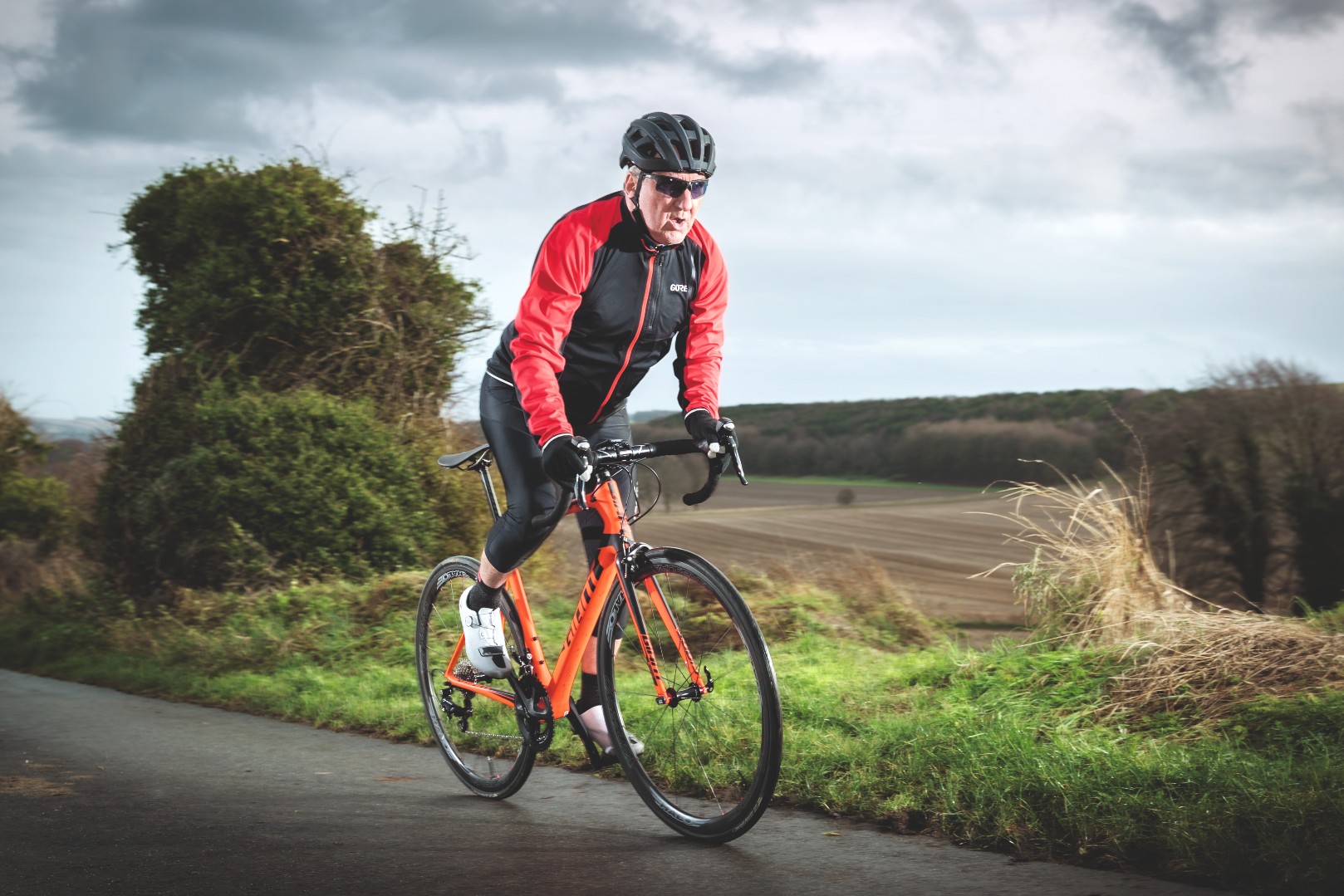With its aluminium frame, hydraulic disc brakes and thru-axles, it’s fair to say that the striking-looking Trek 920’s frameset is an outlier in the touring bike category.
It’s not only the frame and fork that are ploughing a unique furrow, though. Touring bikes are the last hangout of the triple chainset but Trek’s 920 has a double with small chainrings, emphasising the importance of lower gears.
But don’t be fooled: this Trek is every inch the full-on tourer that’s designed to carry you and nearly 40 kilos of your kit (a claimed 25kg at the back, 11.8kg at the front) – with a hefty overall weight limit of bike, rider and cargo at a claimed 136kg /300lb. In all my tours, I’ve never carried anything like 40kg.
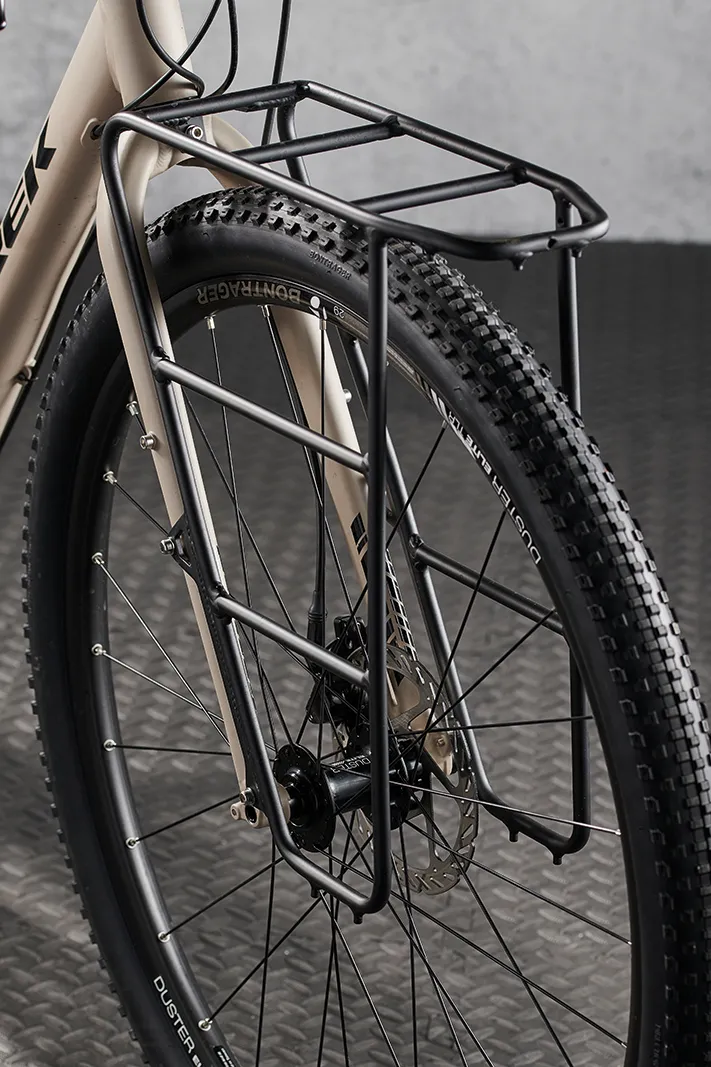
An aluminium frame instead of steel? One of the oft-repeated arguments in favour of steel is that if the frame fails in Uzbekistan or Uttar Pradesh all you need is to find a garage with a welder and your troubles are over.
There is an element of truth to this and I have met one cycle-tourist who did this. But, frankly, any ‘incident’ that writes off an aluminium frame is likely to do the same to its steel counterpart.
Years ago, my loaded aluminium tourer fell off a railway station platform onto the tracks. It came away with nothing more than a scratch. Fortunately, this was in rural New South Wales, one train a day in each direction. I also managed 3,000 miles in three months on that frame, some of it on poor roads.
The Trek 920 has a double chainset rather than a triple and it’s a move away from the Shimano hegemony with its 2x10-speed SRAM setup, which consists of SRAM S700 Double-Tap shifters (two) and GX derailleurs.
Crucially, while it may only have 20 gears compared with the 27 or 30 on the other bikes on test (Fuji's Touring Disc, Cinelli's Hobootleg Easy Travel, Ridgeback's Panorama and Thorn's Club Tour MK5) this doesn’t compromise gears at the all-important lower end – the 28x36 is similar to the bottom gear on the other tourers.
The 42x11 top gear is actually the lowest top gear on test by a fair margin, though that’s rarely an issue when it’s fully laden.
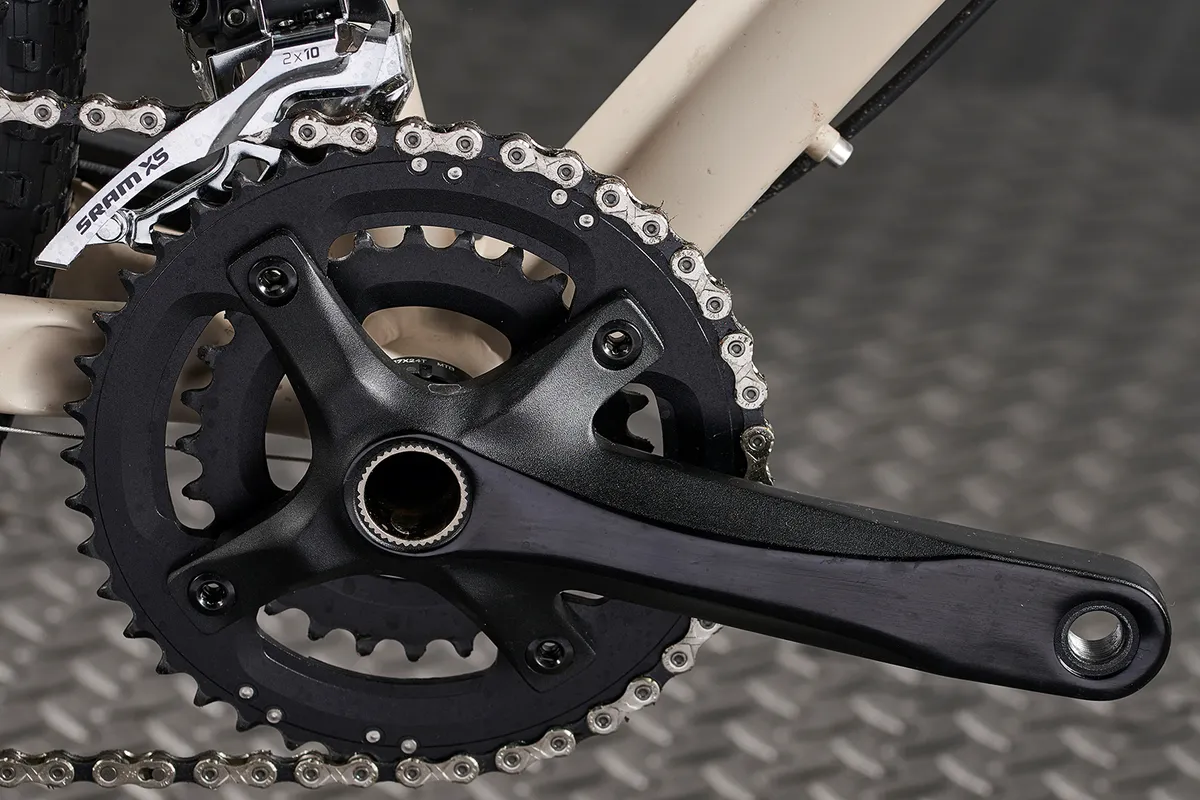
Trek 920 ride impressions
The 920’s ride is a sumptuous, king-of-the-road experience. Loaded up – with most of the weight at the rear – it’s stable, comfortable and tackles poor roads, grit, gravel and towpaths with barely a murmur.
Unloaded, or carrying little kit, the 920 is only negligibly slower than a road bike and as plush as you’ll need.
I got on with the saddle but not everybody will, and for a bike of this size you might want a slightly shorter stem for adventures.
But those are minor quibbles on a bike that I dare you not to like, even if its looks might cause a raised eyebrow among touring traditionalists.
The highlight of the component package is the braking. The cable-actuated discs elsewhere are easily adequate for touring (I’ve toured on cantis and caliper rim brakes with no problems), but SRAM’s hydraulic discs are a level or two above with great braking with minimal effort from your hands and arms.
Gear shifting from the DoubleTap levers is equally efficient, and you’ll pick up the technique within minutes if you’re coming from a Shimano background.
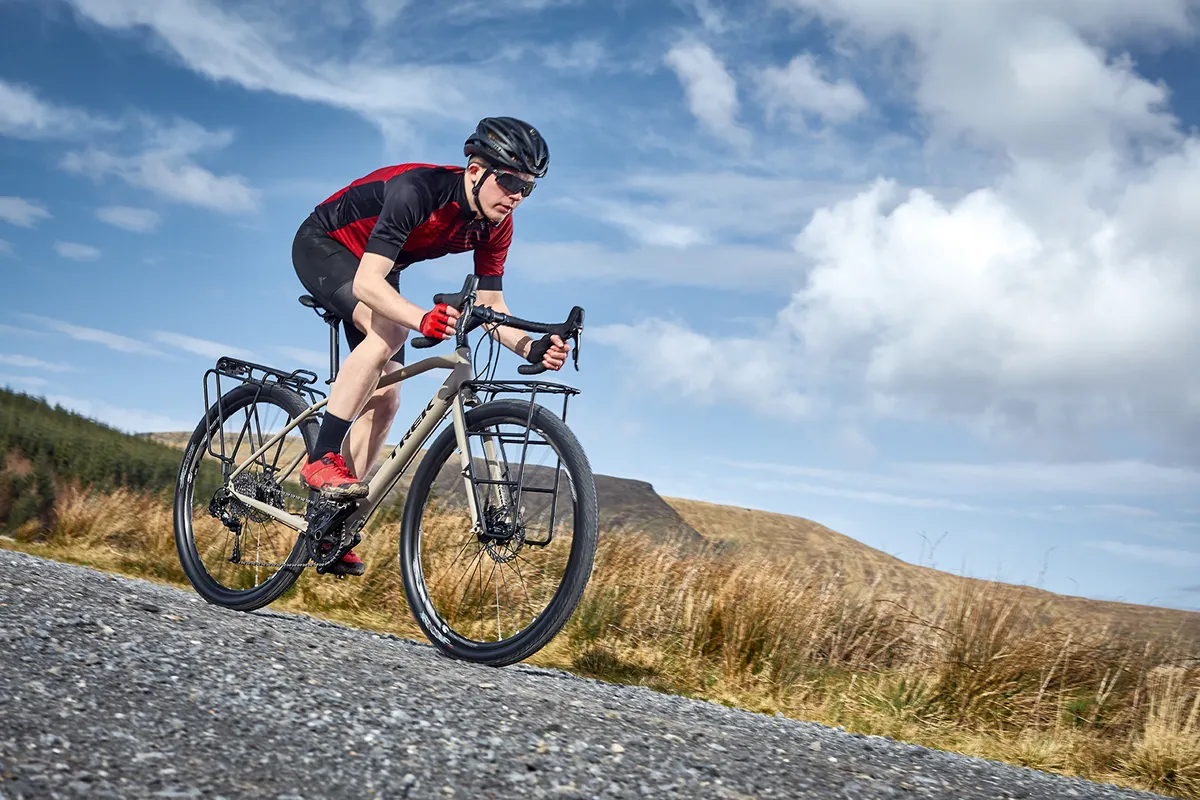
Part of the ride quality comes from the Bontrager Duster 29er rims and wide 2in XR1 mountain bike tyres, and both the rims and tyres are tubeless ready.
The 920 doesn’t come with mudguards but has the fittings for them – and mounts for just about everything else that you could carry, including triple-bottle bosses.
The 920’s Blendr stem is compatible with a wide range of dedicated computers, lights and other accessories. Very neat.
Trek 920 overall
The Trek is perhaps the most versatile bike in my test, doubling up as a day-to-day machine and full-on tourer, expedition, adventure or bikepacking bike.
It comes in at just 12.4kg in a 54cm frame with two panniers, and if you whip these off and fit narrower, slicker tyres (or even change to road wheels) you’ll have a bike nearer 10kg; although it won’t be a crit-racing flyer, it will be comfortable, stable, very well appointed and that little bit sharper.
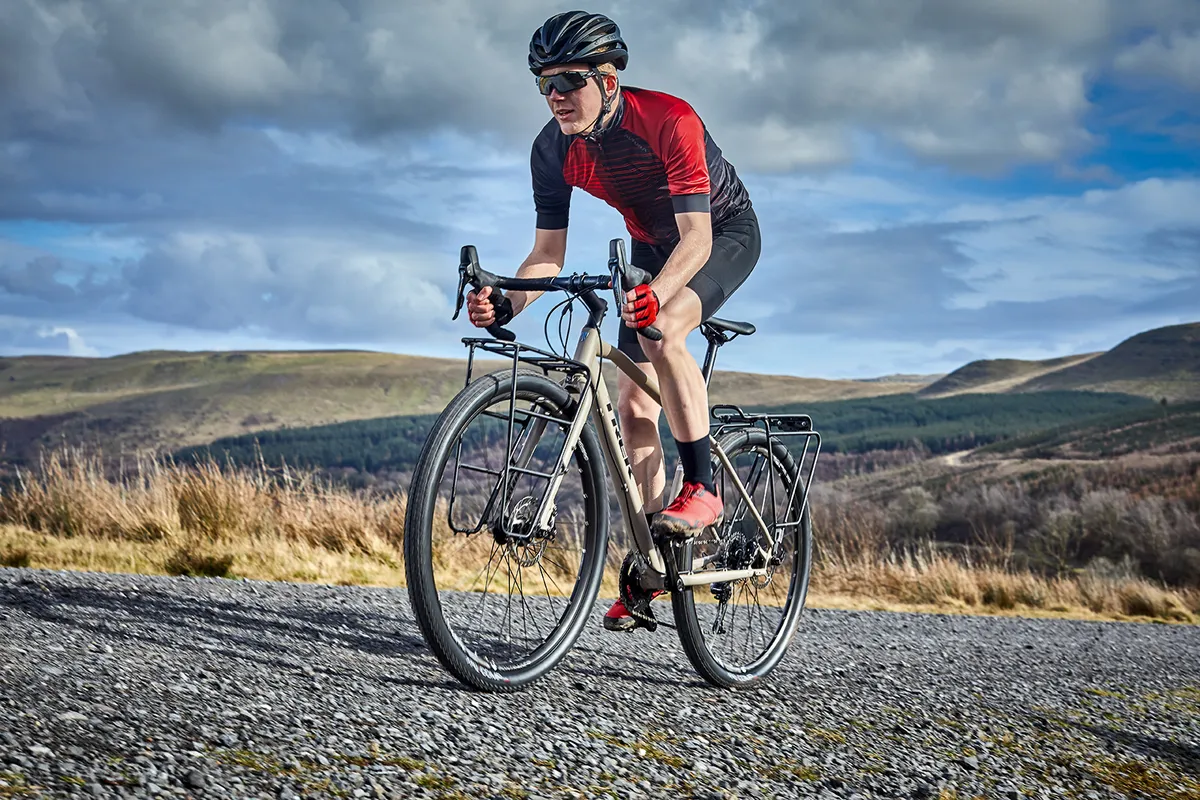
Trek 920 geometry
- Size (* tested): 49, 52, 54*, 56, 58, 61cm
- Seat angle: 74 degrees
- Head angle: 71 degrees
- Chainstay: 46.4cm
- Seat tube: 43.1cm
- Top tube: 54cm
- Head tube: 12cm
- Fork offset: 5.25cm
- Trail: 7cm
- Bottom bracket drop: 8.5cm
- Bottom bracket height: 28.2cm
- Wheelbase: 1,084mm
- Stack: 58.3cm
- Reach: 39.2cm
How we tested
This bike was tested against four other top touring bikes that have been designed to let you unlock your inner adventurer.
Other bikes on test:
- Fuji Touring Disc
- Cinelli Hobootleg Easy Travel
- Ridgeback Panorama
- Thorn Club Tour MK5
Product
| Brand | Trek |
| Price | €1899.00, £1650.00, $2100.00 |
| Weight | 12.40kg |
Features
| Fork | 920 Alloy Disc Adventure, 15mm thru-axle |
| Stem | Bontrager Elite |
| Chain | KMC X10 |
| Frame | 100 Series Alpha Aluminium, 12mm thru-axle |
| Tyres | Bontrager XR1 29x2.0in |
| Brakes | SRAM S700 hydraulic discs, 160mm rotors |
| Cranks | Prowheel 42/28 |
| Saddle | Bontrager Evoke |
| Wheels | Bontrager Duster Elite, tubeless ready |
| Headset | FSA |
| Shifter | SRAM S700 |
| Cassette | SRAM PG1030 11-36 |
| Seatpost | 27.2mm Bontrager |
| Handlebar | Bontrager Race |
| Bottom bracket | Sealed cartridge |
| Available sizes | 49, 52, 54, 56, 58, 61cm |
| Rear derailleur | SRAM GX long cage |
| Front derailleur | SRAM X5 |

